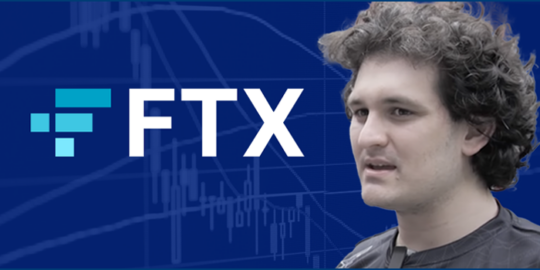Originally published 12/30/18
Editor’s note: The public launch of our security token, Curzio Equity Owners (CEO) is just around the corner… So, in the coming weeks, we’ll be featuring guest articles by experts in this new asset class.
Today, we welcome first-time contributor Herwig Konings, a founding partner of Security Token Group. He unpacks why security token offerings (STOs) are rapidly taking the place of traditional coin offerings (ICOs)… and why there’s no going back to traditional methods of finance.
Some will look back and say all of this was obvious. Others may have shock from the wake up call they receive. Many will continue to deny and believe.
Below, I am going to dissect the rise and fall of initial coin offerings (ICOs)… and give you the institutional investor’s answer to the ICO.
A new technology
Blockchain has been a new VC investment sector since 2013. The concept was pitched with its first native use case, Bitcoin. Up until the end of 2016, blockchain companies would receive almost $1.5 billion in investments.
Then came 2017, and with it, the rise of the ICO. It’s purpose? To remove ourselves from the stranglehold of Wall Street and the existing financing industry… disrupt venture capitalists… and let the average Joe or Sally finance future innovations. Some would even go as far as to say the goal was to circumvent securities law altogether.
ICOs would go on to raise over $6 billion USD in 2017, four times more than the previous four years combined. Many would call this time period The Wild West… and in many cases, it resembled exactly that—the SEC was forced to intervene and play sheriff numerous times.
The rise of the ICO
The ICO did exactly what everyone had hoped it would: Anyone in the world was now able to essentially finance the future innovations of blockchain, and, more importantly, profit from it.
And many, many people profited… The success stories were everywhere. Entrepreneurs avoided onerous terms from traditional financing options, and the average person was able to suddenly play venture capitalist… and make money like one too!
In 2017, a roughly $20 billion ICO market exploded into an almost $800 billion market. That’s 40x growth in little more than a year.
But in a new market with little to no regulation, some investors eventually lost fortunes. For every success story, there was an ICO with a flimsy premise and malicious intent. And these would bring down the industry as a whole…
The fall of the ICO
Come 2018, the SEC was actively aware of this new market. Despite still being tiny compared to the markets it was supposed to monitor (Apple and Amazon’s market caps were still bigger than the entire ICO market), the SEC was spooked by the fact that any American—regardless of their age, sophistication, accreditation, or bad actor history—could participate in this market. And that was exactly what was going on…
Let’s compare the traditional markets the SEC monitors with the ICO market. Keep in mind that the SEC’s role is not to create financial innovation, but to protect investors who participate in U.S. financial markets.
To clarify, we are comparing an individual investor participating in the traditional market—typically through a broker or agent. Instead of this, the investor is now simply holding and purchasing a digital token powered by a blockchain ledger and smart contract like Ethereum.
The issue that arose with the ICO is that the token mirrors owning stock in a company (a debt obligation for a business), where the investor is anticipating a return on investment. But it doesn’t have the same protections.
For our purposes, let’s consider the token as a company share… Because the SEC is legally forced to look at it this way.
By understanding the risks investors have compared to their traditional options, we have a much better perspective about why investors are reluctant to pick this market up again.
Token risks
- Lack of investor legal protections – Tokens have no legal protections. At best, investors might have a simple agreement for future tokens (SAFT). These were designed to be pretty much unenforceable by lawyers covering their clients’ a**es. The space is rampant with lawsuits right now.
- Scam risks – Too many examples have arisen of fake ICOs raising millions of dollars, only for the project to vanish entirely. The hype and excitement made it all too easy for bad actors to swindle investors in a digital and anonymous fashion.
- Technology risks – We’ve heard stories of people throwing away $60M, or exchanges disappearing with almost half a billion dollars worth of tokens. Most stories like this are the result of hackers, exchange shutdowns, and just plain, old stupidity. These risks were all the same for ICOs… and cost investors heavily throughout the last two years.
- Lack of investor rights – Going off point No. 1, investors also don’t not have any rights with their tokens—no voting rights, blocking rights, or any of the many other mechanisms most institutional investors require before investing.
- Liquidity risks – Despite the allure of success and liquidity, many of these markets do not, in fact, have the liquidity they need. After the peak in 2018, and on many smaller exchanges where ICOs lived, there was no real liquidity when the markets crashed… And for those who did want to exit during a high note, many times, their liquidation would force the token price the other way. This is a significant issue, not because there is a lack of liquidity, but because there is an illusion of liquidity that has made investors more comfortable with this type of investment
- Market manipulation risks – Last but not least, these markets and sh*tcoins (as some became dubbed) were massively manipulated by large players. The average investor was at the complete mercy of pump-and-dump schemes of all kinds. This is yet another major reason that the SEC has had to step in and ensure markets are fair for investors, whether for institutional investors or the average consumer.
The end of the ICO
Since the phenomenon started, the SEC has made it very clear that the U.S. markets will not allow this type of flagrant abuse of existing securities laws. Lawsuits, subpoenas, shutdowns, and fines have been issued to pretty much every player in the space, from exchanges to issuers to advisors, lawyers, and promoters.
Instead, we have seen a natural movement towards adoption of securities law. ICOs in the U.S. have started to file for Reg D and limit themselves to accredited investors. Other utility token projects have skipped the ICO altogether to focus on a public release of the actual utility token, as they should have all along.
Today, all the good that came from the ICO has found its way into the “security” token. Security token offerings (STOs) let investors know from the very beginning that these instruments are designed for institutional investors and existing securities laws.
The future of security tokens
The spotlight has now transitioned from ICOs to STOs. Unlike most coin offerings, which were based on future blockchain innovations, security tokens are backed by assets with real underlying value and real uses.
From Wall Street and VCs to real-estate developers, security tokens have the potential to unlock the way they finance… just as ICOs had intended.
The difference is, this time, the tokens will be U.S.-market ready.
All types of assets (businesses, cars, art, cars, sports contracts) will soon be securely tokenized. And the new opportunities for companies—and investors—will be mind boggling…
Herwig Konings
Founding Partner, Security Token Group
Editor’s Note: Frank believes security token technology may soon cause thousands of stocks to disappear from the NYSE… but it will present incredible opportunities for accredited investors.
Watch Frank’s virtual presentation, “Will This New Asset Class be the End of the New York Stock Exchange?” at the MoneyShow next Thursday, October 15, 2020 at 2:10 pm (EDT).
Accredited investors can register free here.
Herwig Konings is a founding partner of
Security Token Group. Previously, Herwig served as the CEO of InvestReady and the Managing Director of the Miami Venture Capital Association.










Originally published 12/30/18
Editor’s note: The public launch of our security token, Curzio Equity Owners (CEO) is just around the corner… So, in the coming weeks, we’ll be featuring guest articles by experts in this new asset class.
Today, we welcome first-time contributor Herwig Konings, a founding partner of Security Token Group. He unpacks why security token offerings (STOs) are rapidly taking the place of traditional coin offerings (ICOs)… and why there’s no going back to traditional methods of finance.
Some will look back and say all of this was obvious. Others may have shock from the wake up call they receive. Many will continue to deny and believe.
Below, I am going to dissect the rise and fall of initial coin offerings (ICOs)… and give you the institutional investor’s answer to the ICO.
A new technology
Blockchain has been a new VC investment sector since 2013. The concept was pitched with its first native use case, Bitcoin. Up until the end of 2016, blockchain companies would receive almost $1.5 billion in investments.
Then came 2017, and with it, the rise of the ICO. It’s purpose? To remove ourselves from the stranglehold of Wall Street and the existing financing industry… disrupt venture capitalists… and let the average Joe or Sally finance future innovations. Some would even go as far as to say the goal was to circumvent securities law altogether.
ICOs would go on to raise over $6 billion USD in 2017, four times more than the previous four years combined. Many would call this time period The Wild West… and in many cases, it resembled exactly that—the SEC was forced to intervene and play sheriff numerous times.
The rise of the ICO
The ICO did exactly what everyone had hoped it would: Anyone in the world was now able to essentially finance the future innovations of blockchain, and, more importantly, profit from it.
And many, many people profited… The success stories were everywhere. Entrepreneurs avoided onerous terms from traditional financing options, and the average person was able to suddenly play venture capitalist… and make money like one too!
In 2017, a roughly $20 billion ICO market exploded into an almost $800 billion market. That’s 40x growth in little more than a year.
But in a new market with little to no regulation, some investors eventually lost fortunes. For every success story, there was an ICO with a flimsy premise and malicious intent. And these would bring down the industry as a whole…
The fall of the ICO
Come 2018, the SEC was actively aware of this new market. Despite still being tiny compared to the markets it was supposed to monitor (Apple and Amazon’s market caps were still bigger than the entire ICO market), the SEC was spooked by the fact that any American—regardless of their age, sophistication, accreditation, or bad actor history—could participate in this market. And that was exactly what was going on…
Let’s compare the traditional markets the SEC monitors with the ICO market. Keep in mind that the SEC’s role is not to create financial innovation, but to protect investors who participate in U.S. financial markets.
To clarify, we are comparing an individual investor participating in the traditional market—typically through a broker or agent. Instead of this, the investor is now simply holding and purchasing a digital token powered by a blockchain ledger and smart contract like Ethereum.
The issue that arose with the ICO is that the token mirrors owning stock in a company (a debt obligation for a business), where the investor is anticipating a return on investment. But it doesn’t have the same protections.
For our purposes, let’s consider the token as a company share… Because the SEC is legally forced to look at it this way.
By understanding the risks investors have compared to their traditional options, we have a much better perspective about why investors are reluctant to pick this market up again.
Token risks
The end of the ICO
Since the phenomenon started, the SEC has made it very clear that the U.S. markets will not allow this type of flagrant abuse of existing securities laws. Lawsuits, subpoenas, shutdowns, and fines have been issued to pretty much every player in the space, from exchanges to issuers to advisors, lawyers, and promoters.
Instead, we have seen a natural movement towards adoption of securities law. ICOs in the U.S. have started to file for Reg D and limit themselves to accredited investors. Other utility token projects have skipped the ICO altogether to focus on a public release of the actual utility token, as they should have all along.
Today, all the good that came from the ICO has found its way into the “security” token. Security token offerings (STOs) let investors know from the very beginning that these instruments are designed for institutional investors and existing securities laws.
The future of security tokens
The spotlight has now transitioned from ICOs to STOs. Unlike most coin offerings, which were based on future blockchain innovations, security tokens are backed by assets with real underlying value and real uses.
From Wall Street and VCs to real-estate developers, security tokens have the potential to unlock the way they finance… just as ICOs had intended.
The difference is, this time, the tokens will be U.S.-market ready.
All types of assets (businesses, cars, art, cars, sports contracts) will soon be securely tokenized. And the new opportunities for companies—and investors—will be mind boggling…
Herwig Konings
Founding Partner, Security Token Group
Editor’s Note: Frank believes security token technology may soon cause thousands of stocks to disappear from the NYSE… but it will present incredible opportunities for accredited investors.
Watch Frank’s virtual presentation, “Will This New Asset Class be the End of the New York Stock Exchange?” at the MoneyShow next Thursday, October 15, 2020 at 2:10 pm (EDT).
Accredited investors can register free here.